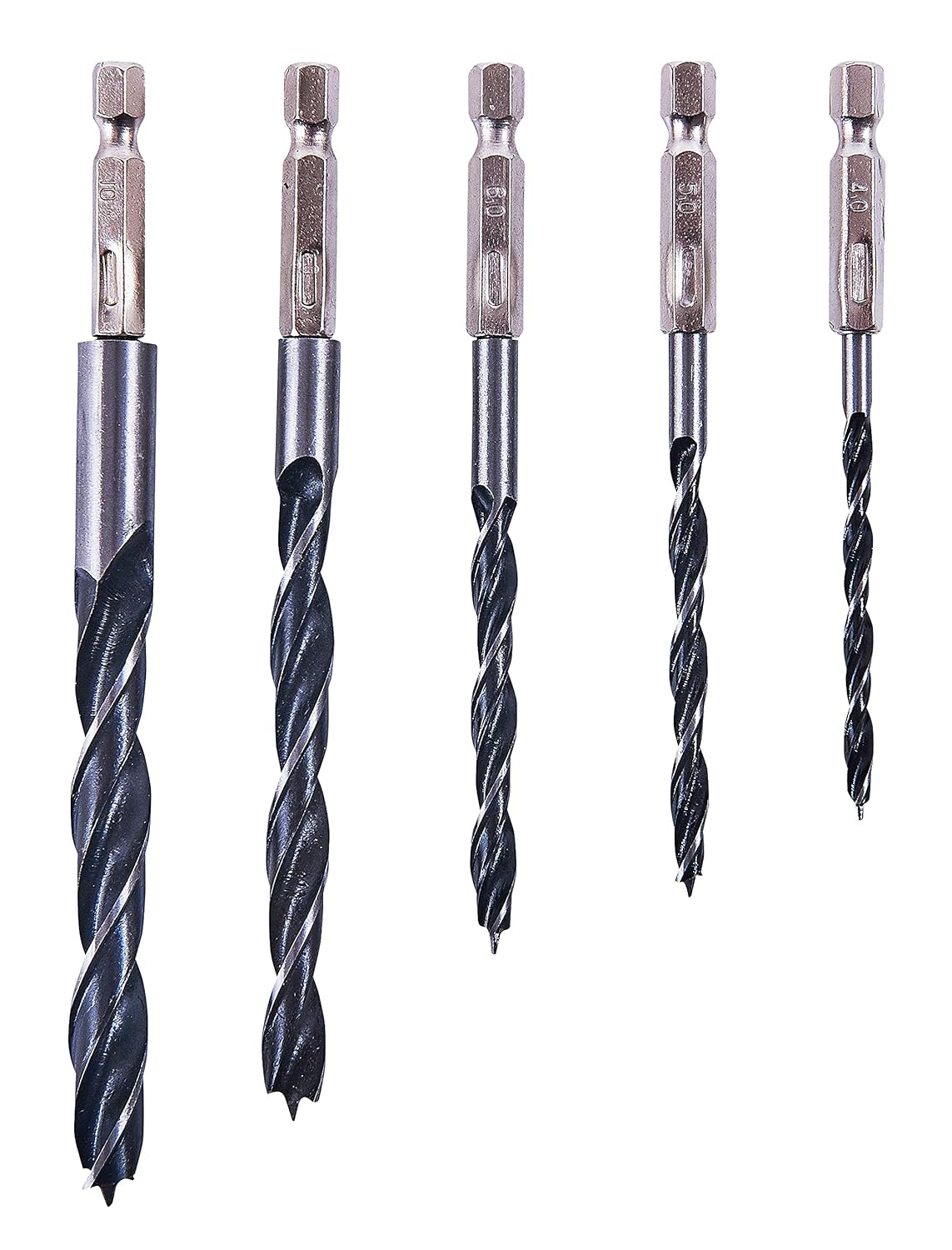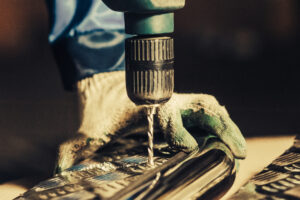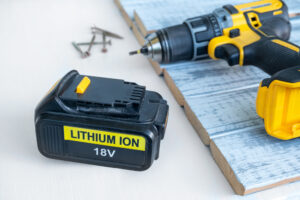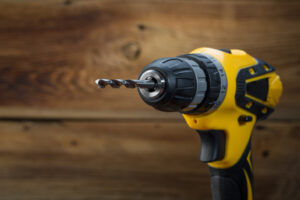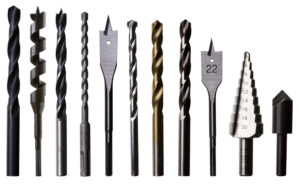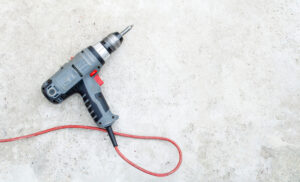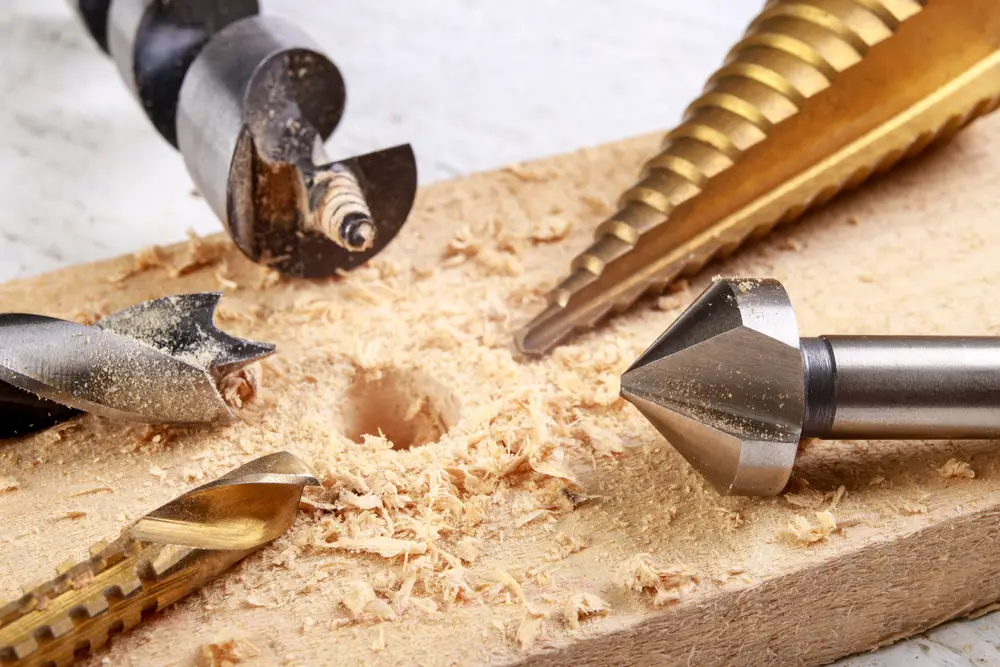
When it comes to choosing the right drill bit for your project, it is important to consider factors such as the material you are drilling into, the accuracy required, and the specific features and terms associated with drill bits. Understanding these factors will help you make an informed decision and select the optimal drill bit for your needs.
Key Takeaways:
- Consider the material you are drilling into when selecting a drill bit.
- Understand the different types of drill bits and their applications.
- Take into account the features and functions of drill bits for better performance.
- Evaluate the drilling objectives and parameters before choosing a drill bit.
- Match the drill bit to the material and the specific requirements of your project.
Understanding Drill Bits and Their Functions
Drill bits are essential tools used with drills to create precise holes in various materials. To understand drill bits better, let’s take a closer look at their different parts and functions.
1. Point
The point of a drill bit is the sharp tip that initiates the hole. It provides accurate positioning and helps prevent the bit from wandering off course.
2. Spur
The spur is a small, sharp brad on the outer edge of the bit. It scores the circumference of the hole, ensuring clean cuts and reducing splintering in wood materials.
3. Cutting Lip
The cutting lip is the edge on the bottom of the bit that does the actual cutting. It slices through the material, creating the hole.
4. Flutes
Flutes are the spiral-shaped grooves on the bit. They act as channels, allowing chips and debris to escape from the hole, preventing clogging and overheating.
5. Shank
The shank is the opposite end of the drill bit that fits into the drill’s chuck. It provides stability and ensures proper alignment during the drilling process.
By understanding the functions of different drill bit parts, you can choose the right bit for your specific drilling needs. Whether you’re working with wood, metal, or other materials, selecting the appropriate drill bit type and features will ensure optimal performance and efficiency.
Choosing the Right Drill Bit for the Material
When it comes to drill bit selection, it’s essential to consider the material you’re drilling into. Different materials require specific drill bit designs and materials. By understanding the characteristics of the material, you can choose the most suitable drill bit for the job.
Wood Drilling
When drilling into wood, auger or spade drill bits are commonly used. Auger bits have a spiral shape that helps remove wood chips efficiently, while spade bits have a flat, paddle-like tip for clean cuts. These drill bits are designed to minimize splintering and ensure precise holes in wood surfaces.
Masonry Drilling
For drilling into brick or concrete, masonry drill bits are the go-to choice. These bits feature a carbide tip that can withstand the tough nature of masonry materials. They are specifically designed to handle the high impact and provide effective drilling in masonry surfaces without damaging the drill bit.
Drill Bit Coatings and Their Benefits
When it comes to drilling, the right drill bit can make all the difference. Not only is the material of the drill bit important, but the coating applied to the bit can also significantly enhance its performance and durability. Let’s explore some of the common drill bit coatings and the benefits they offer.
Drill bit coatings are often applied to enhance key properties such as corrosion resistance, reduced friction, and increased durability. Coated drill bits are designed to withstand the rigors of drilling, extending their lifespan and improving overall efficiency. Here are some of the popular drill bit coatings and the advantages they provide:
Diamond-Like Carbon Coating
Diamond-like carbon (DLC) coatings offer exceptional hardness and excellent lubricity, resulting in reduced friction during drilling. This reduces heat build-up and prolongs the life of the drill bit. DLC coatings are particularly suitable for high-speed drilling in materials like aluminium and composite materials.
Titanium Nitride Coating
Titanium nitride (TiN) coatings provide excellent wear resistance, making the drill bit last longer. TiN coatings also have the added benefit of reducing friction, resulting in smoother drilling and improved chip evacuation. These coatings are commonly used for drilling in stainless steel, cast iron, and other hard materials.
Black Oxide Coating
Black oxide coatings offer enhanced corrosion resistance and improved chip flow. The dark color of black oxide coatings provides heat resistance, reducing the potential for overheating during drilling. Black oxide-coated drill bits are suitable for drilling in materials such as carbon steel, wood, and plastics.
By choosing a drill bit with the right coating for the specific material and drilling application, you can enhance the performance and longevity of the bit. Additionally, coated drill bits can help reduce the need for frequent bit changes, saving you time and money in the long run.
Remember, it’s crucial to match the drill bit coating to the material being drilled to achieve the best results. Now that we understand the benefits of drill bit coatings, let’s explore different types of drill bits and their applications in the next section.
Different Types of Drill Bits and Their Applications
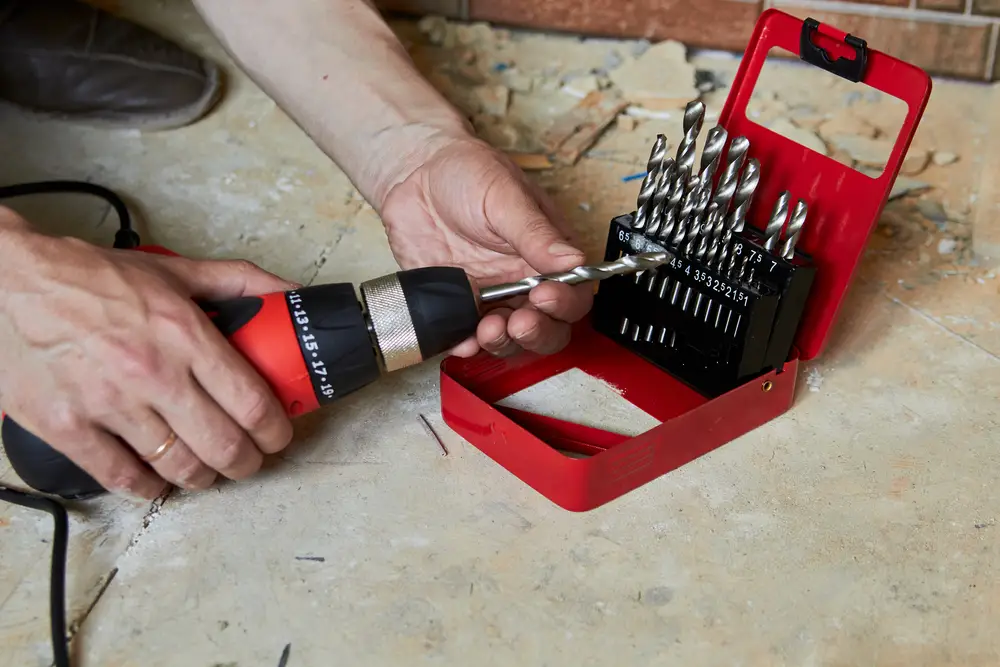
When it comes to drilling, choosing the right type of drill bit is essential for achieving accurate and efficient results. There are various drill bit types available, each designed for specific applications. Understanding the differences between these drill bit types and their respective applications will help you choose the right tool for your specific needs.
Twist Drill Bits
Twist drill bits are the most common and versatile type of drill bit. They feature a spiral-shaped cutting edge known as flutes, which helps to remove material as you drill. This type of drill bit is suitable for drilling into wood, plastic, and metal surfaces. Twist drill bits come in a range of sizes and can be used with both hand drills and power drills.
Brad Point Bits
Brad point bits, also known as dowel bits, are designed specifically for drilling clean and accurate holes in wood. They feature a pointed tip that helps to position the bit accurately and prevent it from drifting or splintering. Brad point bits are commonly used for woodworking projects that require precise and neat holes, such as furniture assembly or cabinetry.
Auger Bits
Auger bits are ideal for drilling deep holes in wood. They feature a screw-like design that helps to remove material efficiently and pull the bit deeper into the hole as you drill. Auger bits are commonly used in construction, carpentry, and woodworking projects that require drilling deep holes for bolts, wires, or plumbing.
Spade Bits
Spade bits, also known as paddle bits, are designed for drilling large holes in wood and other softer materials. They feature a flat and wide spade-shaped cutting edge that quickly removes material as you drill. Spade bits are commonly used in construction, carpentry, and DIY projects that require drilling larger holes, such as for door locks or passage of cables.
Forstner Bits
Forstner bits are specially designed for drilling flat-bottomed holes in wood. They feature a cylindrical cutter with flat edges that produce clean and precise holes without splintering or tear-out. Forstner bits are commonly used in woodworking projects that require precise holes for hinges, recessed hardware, or decorative accents.
Hole Saw Bits
Hole saw bits are versatile tools used for cutting larger holes in various materials. They consist of a pilot bit in the center and a cylindrical saw blade with sharp teeth that cut through the material. Hole saw bits are commonly used in plumbing, electrical, and construction applications where larger holes are required.
Understanding the different types of drill bits and their applications will help you choose the right tool for your specific drilling needs. Whether you are working with wood, metal, or other materials, selecting the appropriate drill bit can ensure precise, efficient, and professional results.
| Drill Bit Type | Applications |
|---|---|
| Twist Drill Bits | Wood, plastic, metal |
| Brad Point Bits | Woodworking, furniture assembly, cabinetry |
| Auger Bits | Construction, carpentry, woodworking |
| Spade Bits | Construction, carpentry, DIY projects |
| Forstner Bits | Woodworking, precise hole drilling |
| Hole Saw Bits | Plumbing, electrical, construction |
Factors to Consider in Drill Bit Selection
When I set out to select a drill bit for a particular drilling project, I carefully consider the drilling objectives and parameters. These factors play a crucial role in determining the type of drill bit that will yield optimal results. By evaluating the desired rate of penetration, bit life, hole quality, and drilling efficiency, I ensure that I choose the most suitable drill bit for the job.
In addition to these objectives and parameters, I also take into account the wellbore geometry and trajectory. This includes considering the hole size, inclination, and curvature. Understanding these aspects allows me to assess the specific requirements of the drilling operation and make an informed decision regarding the drill bit selection.
| Factors to Consider in Drill Bit Selection | Description |
|---|---|
| Rate of Penetration | The speed at which the drill bit can penetrate the material being drilled. Choosing a drill bit with the appropriate cutting speed ensures efficient drilling. |
| Bit Life | The durability and longevity of the drill bit. Factors such as the material and coating of the drill bit contribute to its overall lifespan. |
| Hole Quality | The precision and smoothness of the hole created by the drill bit. Different drill bits have varying levels of accuracy and finish. |
| Drilling Efficiency | The overall effectiveness and productivity of the drilling process. Factors such as chip evacuation and heat dissipation influence the efficiency of the drill bit. |
Evaluating Drilling Objectives and Parameters
By carefully evaluating these drilling objectives and parameters, I can select the optimal drill bit that meets the specific requirements of the project. Whether I need a high-speed steel bit for general-purpose drilling or a carbide-tipped bit for drilling through tough materials like concrete, considering these factors guides me towards a successful drilling operation.
Conclusion
Choosing the right drill bit is crucial for the success of your drilling project. By considering factors such as the material, coating, type, and application of the drill bit, as well as the drilling objectives and parameters, you can select the optimal tool for your specific needs.
Remember to always match the drill bit to the material and take into account the specific features and functions of different types of drill bits. Whether you are working with wood, metal, or concrete, there is a drill bit designed to deliver the best results.
With the right drill bit, you can achieve optimal performance, improve accuracy, and enhance your DIY prowess. So next time you embark on a drilling project, take the time to evaluate your options and choose the drill bit that will make all the difference. Happy drilling!
FAQ
What factors should I consider when selecting a drill bit?
When selecting a drill bit, it is important to consider factors such as the material you are drilling into, the accuracy required, and the specific features and terms associated with drill bits.
What are the different parts of a drill bit and what do they do?
Drill bits consist of different parts such as the point, spur, cutting lip, flutes, and shank, each performing a specific function in the drilling process.
How do I choose the right drill bit for the material I am drilling into?
The material you are drilling into plays a crucial role in determining the type of drill bit you should use. Different materials require different drill bit materials and designs.
What are drill bit coatings and what are their benefits?
Drill bits can be coated with materials such as black oxide, titanium nitride, and diamond-like carbon, providing benefits such as corrosion resistance, reduced friction, and increased durability.
What are the different types of drill bits and their applications?
There are several types of drill bits, including twist drill bits, brad point bits, auger bits, spade bits, forstner bits, and hole saw bits, each designed for specific applications.
What factors should I consider in drill bit selection?
When selecting a drill bit, it is important to consider factors such as the drilling objectives and parameters, wellbore geometry and trajectory, and the desired rate of penetration, bit life, hole quality, and drilling efficiency.
How can I choose the optimal drill bit for my drilling project?
By considering factors such as the material, coating, type, and application of the drill bit, as well as the drilling objectives and parameters, you can select the optimal tool for your specific needs.
- Drill Battery Maintenance: Essential Tips for Cordless Drill Battery Care - February 5, 2024
- Troubleshooting Drill Issues - February 5, 2024
- Quick Drilling Techniques - February 2, 2024

